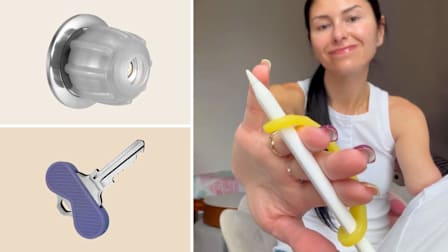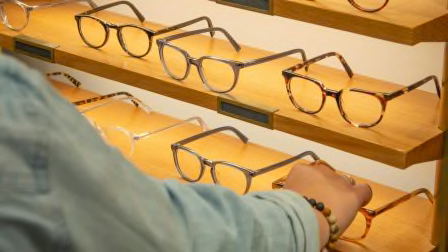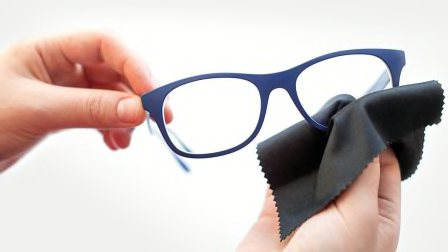Buy Eyeglasses Like a Pro: Expert Advice on Frames, Lenses, Coatings, and More
How to find the best quality and service at the lowest possible price—whether you're shopping online or in person
These days, buying eyeglasses can be complicated—especially if you’re looking for options beyond those your eye doctor sells. You can, instead, take a copy of your prescription (you’re legally entitled to it) to a local optical shop, a chain such as LensCrafters, a big box store like Target, or an online site such as Warby Parker or Zenni Optical.
Wherever you go, you’ll have to choose the size, style, and make of the frames. That’s before you even get to lenses. “There are a lot of different options . . . and I think sometimes patients can feel overwhelmed,” says Franklin Bui, OD, assistant clinical professor at the State University of New York College of Optometry in New York City. “It can sometimes feel like you’re going to a car dealership.”
Costs can vary widely from place to place. In a 2022 survey of 11,450 Consumer Reports members (PDF) who’d purchased new glasses in the previous two years, people paid a median of $205 after insurance or $224 out of pocket. But the median price at independent optical shops was $346 after insurance or $511 out of pocket. Members who shopped at two of our top-rated stores, Costco and Warby Parker, paid a median of $160 and $190 after insurance, respectively.
To help you get the right eyeglasses at the lowest price, we used member surveys to rate satisfaction with 16 retailers as well as private eye doctors’ offices and independent shops. We also asked a variety of experts about the best ways to buy new glasses and how to avoid potential pitfalls.
Get the Most From Buying in Person
Most of CR’s members—about 90 percent—opted to buy glasses in person rather than online. The most common reason members gave for choosing a retailer? It’s the place where they had their eye exam.
There are plenty of advantages to getting your glasses from a physical store. A major one, according to Mika Moy, OD, a clinical professor at the Herbert Wertheim School of Optometry & Vision Science at UC Berkeley in California, is “the ability to try on the glasses and have an expert tell you, based on your prescription, the pros and cons of those glasses on your face.” If you have a strong prescription (which may require thicker lenses), for example, some very large frames might not be ideal, because big, thick lenses may make your glasses feel too heavy.
Pros and Cons of Purchasing Online
For some people, shopping for eyeglasses online may offer a few distinct advantages. CR members who used online stores reported convenience as an important reason for going that route. And then there’s cost, which is probably a key draw for online shoppers. In our ratings, prominent online retailers such as Eyebuydirect, Warby Parker, and Zenni Optical received high marks from our members when it came to price. At Zenni Optical, members reported paying a median of just $87 after insurance.
In addition, research suggests that the quality of glasses from online retailers has markedly improved. In one 2021 study, just 10 percent of glasses ordered online failed to meet industry standards for factors like prescription quality and impact resistance; a similar study from 2011 found that rate to be about 45 percent. (Little data is available on how often glasses from physical stores need to be remade. But a few experts said optometrists can switch lens labs if they notice frequent mistakes.)
Still, online shopping has plenty of drawbacks. One major issue is that you won’t have an in-person optician measuring and checking to make sure the glasses you want will be a good fit for your face and your prescription.
That’s probably fine for consumers who need single-vision lenses with milder levels of correction, according to a number of experts we spoke with. But the stronger and more complicated your prescription is—if you need multifocal or progressive lenses, or astigmatism correction, for example— the more you should lean toward buying in person. (Classifications vary, but the American Academy of Ophthalmology considers severe nearsightedness to be a prescription of -6 or worse, and severe farsightedness to be a prescription of 5.25 or higher.)
That’s in part because the stronger your prescription, the more precisely your glasses need to be aligned with your pupils, says Neil Pence, OD, associate dean for clinical and patient care services at the Indiana University School of Optometry in Bloomington. Misalignment can lead to headaches and other issues.
Progressive lenses, in particular, “are generally more complicated and require more care and expertise in fitting them,” says Adam Gordon, OD, a professor at the School of Optometry at the University of Alabama at Birmingham.
In CR’s survey, members who ordered progressive lenses from online sellers did not rate the quality of their glasses significantly lower than those who purchased other types of lenses online. Still, if your vision needs are more complex, use caution if you opt to shop online. All online shoppers should pay close attention to return policies, says Moy at UC Berkeley. Be sure you can get your money back if the glasses aren’t working for you. If, after a week, your glasses are still uncomfortable, you should probably return them, Pence says.
Pick the Right Features for You
Wherever you opt to shop, you’ll need to make several decisions. After you settle on the frames you want, the next step is lens material. Here are some options.
CR-39: Apart from glass, which is no longer widely used, this is the most basic of the lens materials. It is sometimes referred to as standard plastic. CR-39 lenses are inexpensive, and they are not as light or durable as pricier options. People with stronger prescriptions—which require thicker, heavier lenses—may find that glasses made of this material slide down their nose or feel heavy on their face.
Polycarbonate or Trivex: Most lenses sold in the U.S. these days are made from a type of plastic called polycarbonate, says Michael Vitale, vice president of membership, government relations, and technical standards for the Vision Council, an industry group. Polycarbonate is more lightweight and impact-resistant than CR-39. But it scratches easily—which is why most polycarbonate lenses come with scratch-resistant coating. Trivex, a newer plastic lens material, offers similar advantages to polycarbonate and also requires a scratch-resistant coating. It may result in slightly better image clarity than polycarbonate, but it tends to be more expensive.
High-index: High-index lenses are generally thinner and lighter than polycarbonate lenses. These can be a good choice if you have a strong prescription (particularly if you prefer a larger frame) because the lenses won’t be noticeably thick at the edges. High-index numbers range from 1.6 to 1.74; the higher the number, the thinner the lens—and the pricier, too.
Coatings
Once you’ve picked a lens type, you’ll need to choose which of the available coatings you want. Some options are useful, and others are less so.
Scratch-resistant: This helps to enhance the durability of the more scratch-prone types of lenses and is standard on glasses from a variety of retailers, including Costco Optical, Warby Parker, and Zenni Optical. Estimated cost: $16 to $40.*
Anti-reflective (AR): The key advantage is that lenses with antireflective treatment allow more light to reach your eyes, according to Drenen at the optical technology program at Cuyahoga Community College. That’s especially beneficial for older people, whose eyes naturally let in less light, and for driving at night, when the light is already low. The stronger your prescription, the more important this feature, because stronger prescriptions tend to reflect more light, Drenen says.
One downside, according to Natasha Herz, MD, clinical spokesperson for the American Academy of Ophthalmology, is that this coating can wear off over time, which can lead to your glasses seeming permanently smudged. But most AR coatings should last for the lifetime of the prescription (most prescriptions are valid for one or two years), Vitale says. Proper lens care will also help with longevity, so use lens cleaner and a lens cloth to wipe your lenses off, rather than your T-shirt or a paper towel.
While basic AR coating is becoming standard on many lenses, premium anti-reflective coatings are also available. Several experts tell us these are likely to be more durable. Premium AR coatings also tend to include additional features such as smudge resistance and anti-fog coating. Estimated cost: $75 to $150.*
UV protection: These days, a coating that protects eyes from ultraviolet light is included with many lenses— but it’s a must to add if the glasses you’re buying don’t have this. “You can’t put sunscreen on the surface of the eye or on your eyelids,” Herz says, and it’s possible to develop skin cancer in those areas. UV light can also contribute to the development of cataracts. Estimated cost: $10 to $25.*
Blue-light blocking: A popular add-on for eyeglasses these days, this coating—which is sometimes yellow-tinted—is meant to filter out blue-colored light. It’s touted to reduce eye strain (from all-day computer use), enhance sleep, and even improve eye health. Some evidence suggests that blocking blue light might indeed be useful for improving sleep (because blue light affects the circadian rhythms that govern sleep), but there’s insufficient evidence that this can ease eye strain or reduce the risk of eye diseases such as macular degeneration.
And although adding blue-blocking to your glasses isn’t harmful, Berkeley’s Moy says there are other, cheaper ways of achieving the same effect. For instance, you can choose the “night mode” on electronic devices, which filters out blue light at the source. (Estimated costs are not available because this coating isn’t associated with a specific medical billing code.)
*Source: The Vision Council; prices may vary further.
The Other Number That Matters
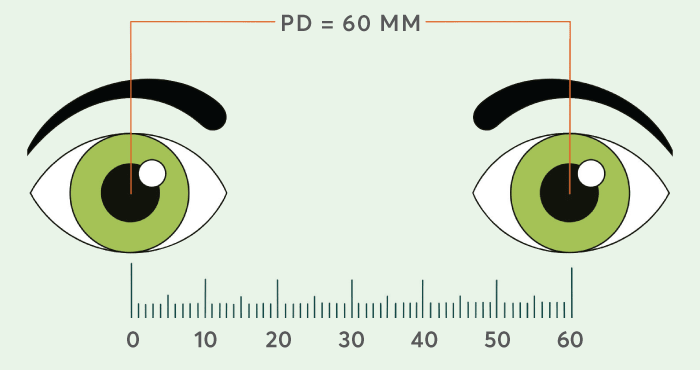
Should You Try an Online Eye Exam?
Some online retailers offer eye tests as well as eyeglasses. Can you trust the results? A Warby Parker rep told us the company’s app-based vision test (the exam an eye doctor usually performs in person to determine your prescription) uses your phone’s camera, sensors, and algorithms to make sure you’re positioned the correct distance from the device for accurate results. But this test can be used only to renew an existing prescription with no changes—it won’t generate a new prescription.
Several experts expressed concern about such tests, mainly because they are too narrow in scope. UC Berkeley’s Moy says the tests can’t evaluate the visual comfort of a prescription. They also leave out the critical health assessment that’s part of a comprehensive eye exam, which includes checks for cataracts, glaucoma, macular degeneration, and more.
So even if you use an online prescription renewal service in a pinch, it’s important to have an in-person eye exam every year or two, depending on your age and health status.
Editor’s Note: This article also appeared in the October 2023 issue of Consumer Reports magazine.

















